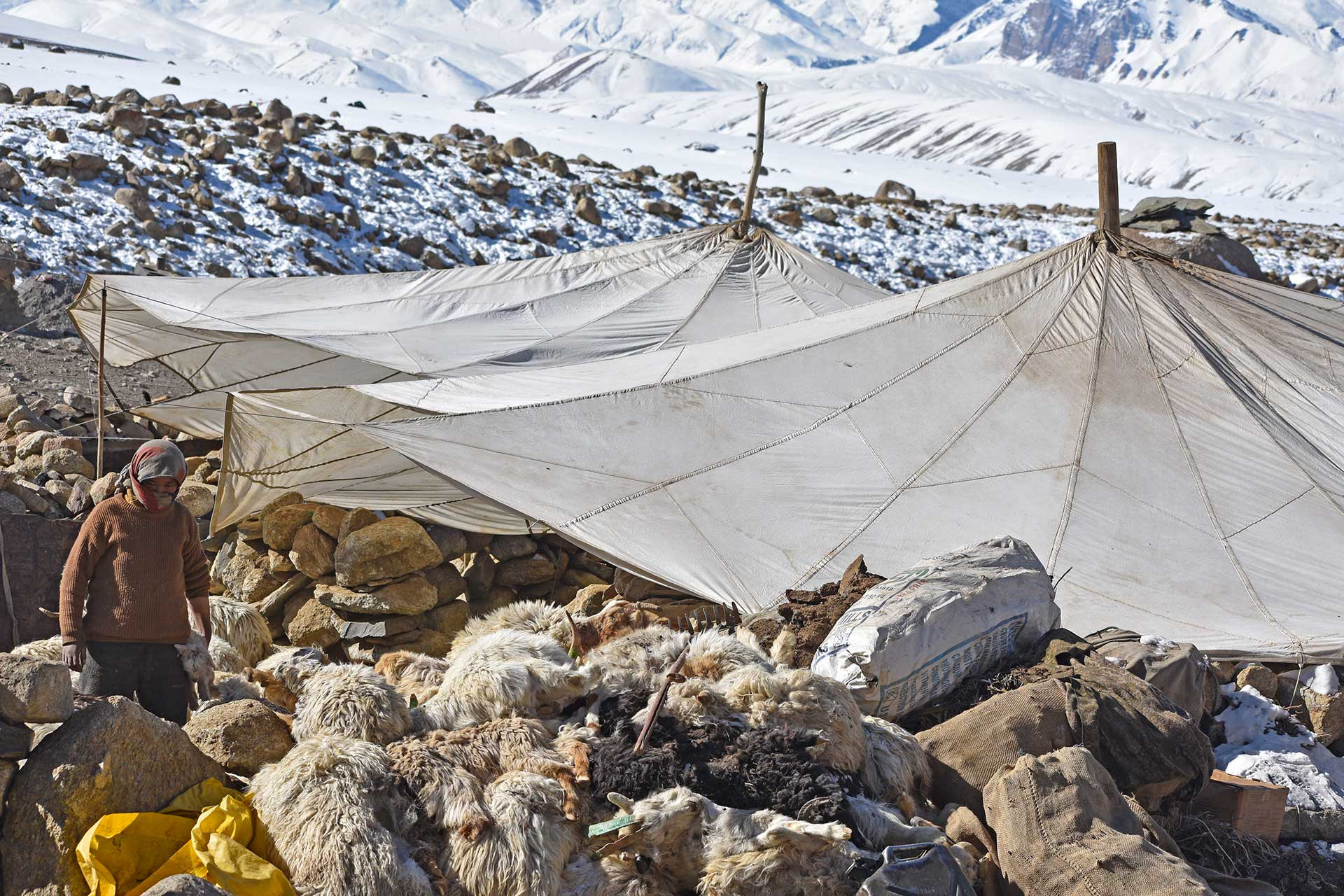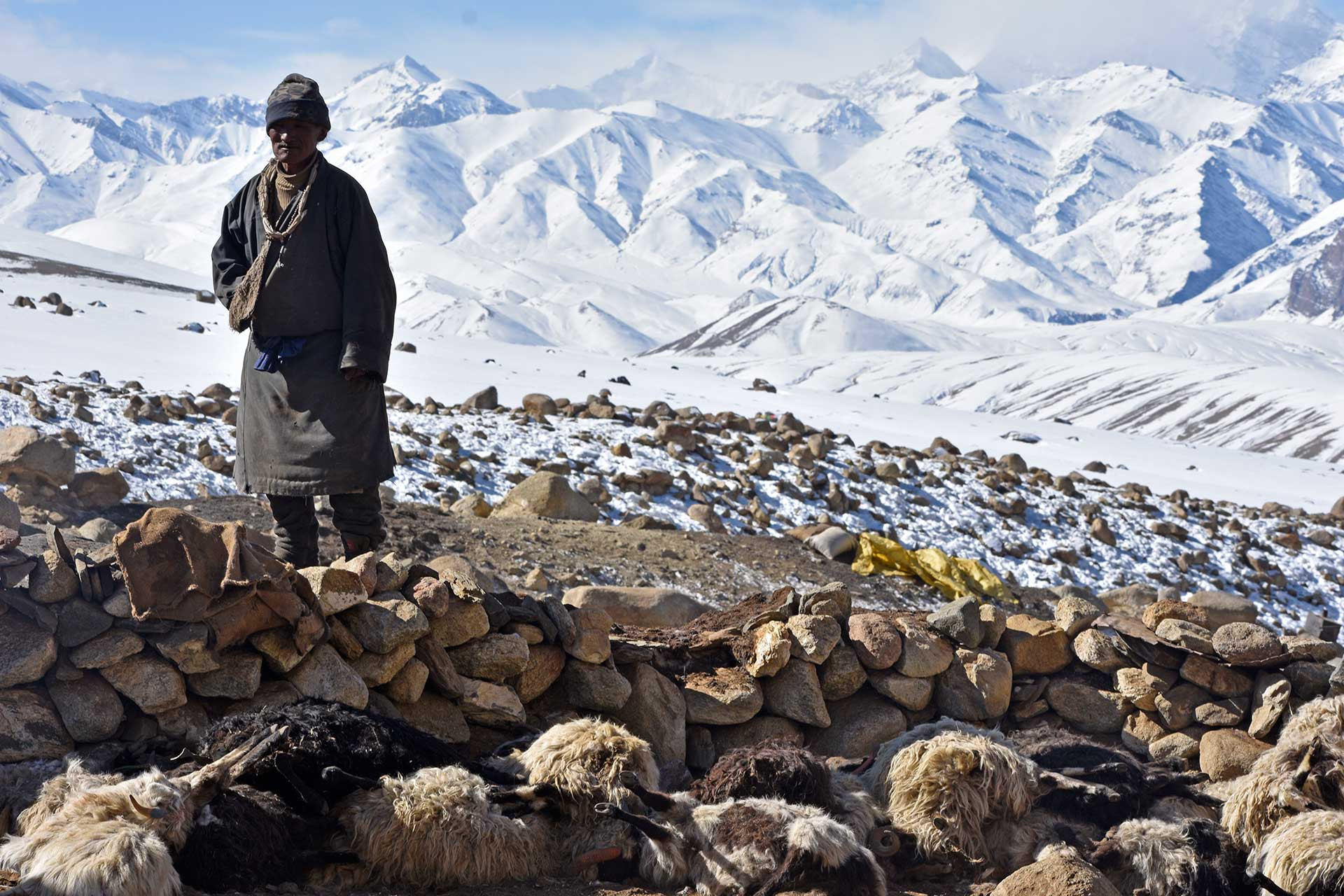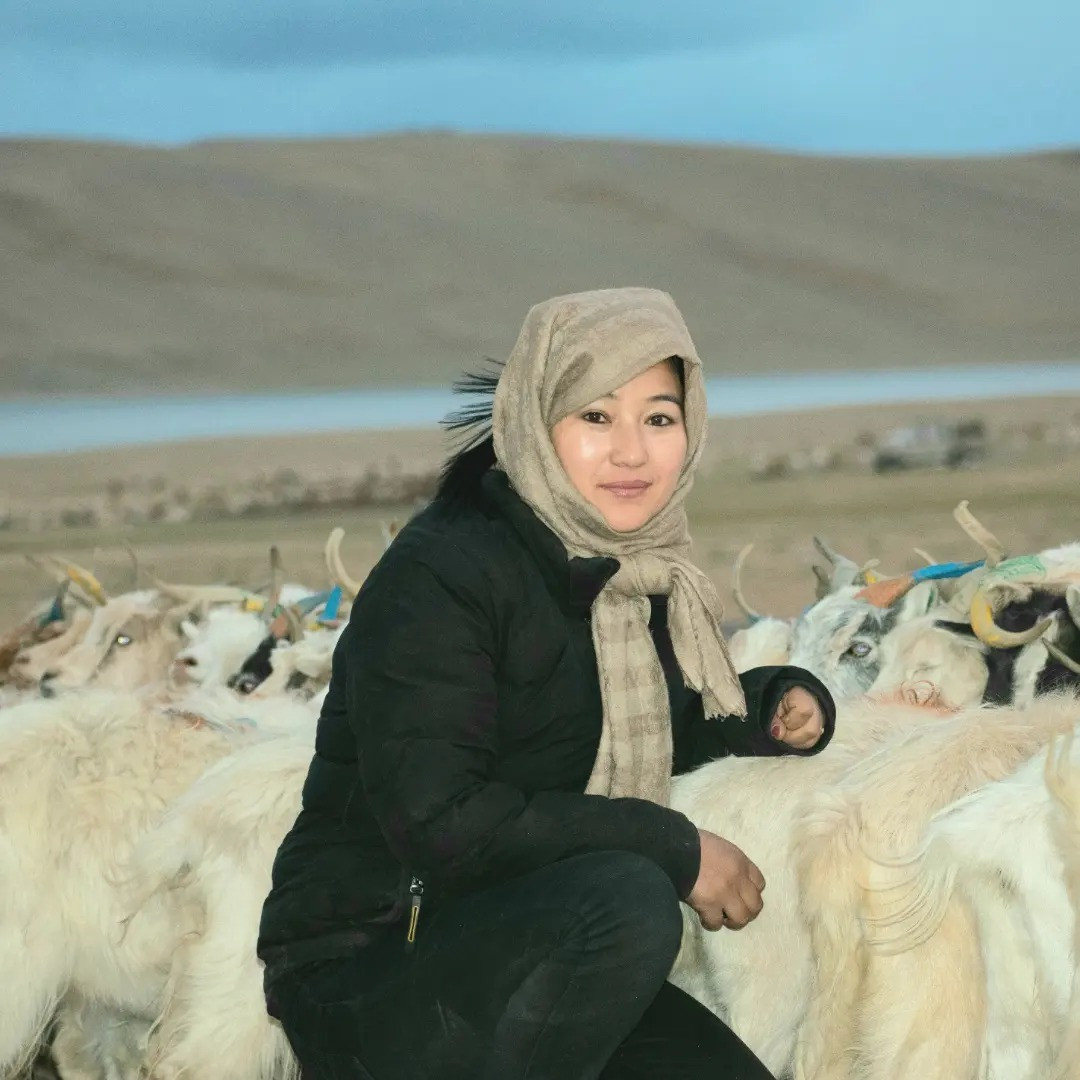Conservation Optimism is a global community dedicated to sharing optimistic stories about conservation and to making people feel empowered to act for nature.
January 2022
My colleague Rigzen Dorjay and I were visiting Tegazong Korzok in Changthang, Ladakh, to meet with the members of a herding community there. Winters in Changthang are extremely harsh, so much so that if you fail to start your vehicle at least five times during the night, you can be sure to lose the engine to the cold. We wouldn’t dare displace ourselves from the bhukhari (traditional iron fireplace)!
During the meeting, Karma Zangpo, a member of the Tongone herding community, walked up to us and asked if we could visit where his community had pitched tents in an adjacent valley. A majority of the Tongone community are Tibetan refugees who are constantly struggling to stand their ground. Out of sheer compassion and as a sign of respect, we agreed to visit the Tongone Valley the next day.
The Tragedy of Tongone
In the summer, the journey would not have been longer than an hour, but the steep frozen tracks added an extra hour as our 4X4 juggled and slipped its way to the destination. As we approached the tents, people were expecting us. They welcomed us warmly, offering us khataks (traditional white silk scarfs), tea and breakfast. Zangpo then took us around, one by one, to each household. To our surprise and bewilderment, their livestock were utterly motionless, and it was difficult to know if they were dead or alive. We witnessed a pashmina goat give up right before us as we entered one of the tents, and we just walked out, feeling helpless. Corrals (livestock enclosures) were filled with piles of dead livestock. Two of the herders had already left the valley as they had lost all hope for the survival of any of their livestock. The helplessness of the situation made our hearts sink in deep sorrow and melancholy.
Corrals do not have roofs and are enclosures made with rock piles, but this year, after almost 30 years, they were forced to cover the corrals to fight the cold. Each household had lost anywhere from 40-120 livestock. Altogether, 600 kids and lambs had died.
A herder expressed his sorrow as he told us that the reepul (shed for kids and lambs), which would be full of kids and lambs during this time of the year, instead was full of the dead bodies of their mothers.
They had tried everything to save their animals from freezing to death; fed them with everything they had, including barley and flat noodles. Some of the families now hardly had anything left to eat for themselves. Nevertheless, in such a time of grief, loss, uncertainty and vulnerability, we spent time with the community and stayed back in Tongone Valley for three days.
Having spent time with the community during a crisis, we learnt about the problems that plague them. Traditionally, livestock in Changthang depend on barley during the lean winter season. Barley grown in Western Ladakh would be traded by the Changpas in exchange for commodities such as wool, meat and salt. But owing to the advance of tourism in Western Ladakh, barley availability has been very low.
Within a week, we wrote a report to our senior staff, and we decided to aggregate barley from Western Ladakh and provide it to the Tongone community. Although providing free provisions is against our norms, since this was a highly catastrophic event, we felt compelled to help a partner community.
According to the herders, this desperate situation was in part created by the unseasonal autumn snowfall and accumulated winter snowfall, which led to a lack of forage in the region. The impacts of climate crisis in action! Of course, this is compounded by the other challenges pastoralists face in this landscape, like livestock depredation. For example, there was an incident of a Snow Leopard entering a corral and killing 96 goats and sheep in a single night.
The Lifeline of Ladakh
The Changpas are the nomadic pastoral communities living in the Changthang plains of Eastern Ladakh. At an altitude of more than 1400 feet, winter temperatures in this vast cold desert in the Tibetan Plateau between India and China can fall to minus 25 to 30 degrees. Changpa means ‘tribe’ and Changthang means ‘Northern Plateau’. With limited agriculture possible in the region, they rely majorly on livestock farming for their sustenance and livelihoods, including trading for wool and meat.
A shepherd’s life, including that of the Changpa herders, is the most humble and one of the oldest professional jobs in the world. From cheese, buttermilk, pashmina wool, goat hair to livestock dung (used as manure and for heating during winter), the people of Ladakh depend on their shepherds to survive this harsh landscape.
Being nomads, Changpa people predominantly spend their lives in the mountains. They have no holidays, regardless of snow, rain, harsh weather or auspicious days. They go herding 365 days of the year. They have to be vigilant every day to protect their livestock from predators.
Shepherds maintain complex maps of the areas where their herds graze. These maps include seasonal weather patterns and partnerships or conflicts with other herders and wildlife. They are always trying to improve livestock productivity through segregated grazing of selected animals as per their health, frequent pastureland rotation, and controlled mating. Not only is this beneficial for livestock, it is also a traditional form of pasture management.
'Community-based' Conservation
We have been working with herder communities in Ladakh for the past few years, and one of our primary takeaways has been that to conserve wildlife in rangelands such as Changthang, we need to learn from and work with local people such as the Changpas because they are the true local champions. For millennia, their very existence has been intertwined with the landscape, and it is important we treat them as allies in our endeavours to conserve its wildlife.
Despite being more inclusive than fortress conservation, community-based conservation has been rightfully criticised for being a top-down implementation of external ideas brought to local communities. This is particularly true for the pastoral people of Changthang, who live alongside unique flora and fauna found nowhere else in the world. Seen as encroachers by the forest department who wish to “protect” Changthang or as mere recipients of reparations by various conservation NGOs, it is high time we came together to co-design context-sensitive interventions and implement them using participatory methods with Changpa people to facilitate positive human-nature interactions in the region.







